
A painted frame of a se with circular carved phoenix head and painted vertical scale patterns on part of the body is excavated in Guojiamiao cemetery.[Photo/kaogu.cn]
Ancient music and dance relics discovered in Hubei
Archeological workers started excavating Guojiamiao cemetery in Zaoqiang county of Hubei province since November in 2014. In late January of 2015, they announced their latest finds of more than 1000 artifacts made of bronze, pottery, lacquered wood, bone, leather, jade and other materials.
Among them, several traditional musical instruments were found in early January which were considered to be the oldest of their kinds. These artifacts were unearthed in good condition at the tomb group, which covers an area of 1.2 million square meters.
According to experts in Hubei Provincial Cultural Relics and Archaeology Research Institute, all these musical instruments were made and used in the early Spring and Autumn Period (770-476 BC), including an earliest known se (a twenty-five-stringed plucked instrument, somewhat similar to the zither) dating to about 2,700 years ago.
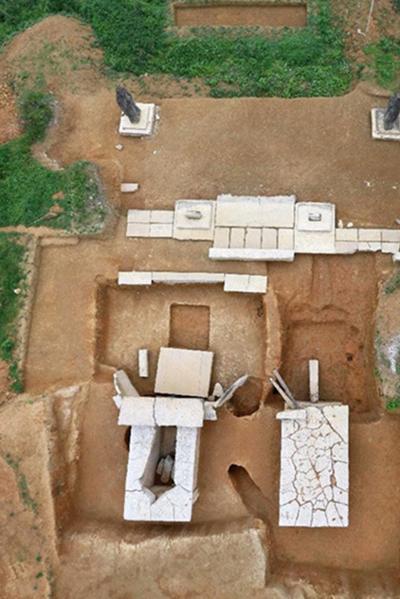
An aerial view of Guojiamiao cemetery.[Photo/Xinhua]
A new find in Terracotta Warrior Army site
Chinese archaeologists have been excavating the No 1 pit of the Museum of Qin Shihuang Terracotta Warriors and Horses in Xi’an city, capital of Northwestern China’s Shaanxi province since 2009. They announced an astonishing find in late March: a 2,200-year-old crossbow in pristine condition buried with the vast army of terracotta warriors.
According to experts, this is the most complete crossbow found to date at the site. It has a 145 centimeter (57 inch) arch and, incredibly, the bow string remains intact and measures 130 centimeters (51 inches) long. Researchers believe the string is made of animal tendon rather than fabric, which would have degraded and disappeared long ago.
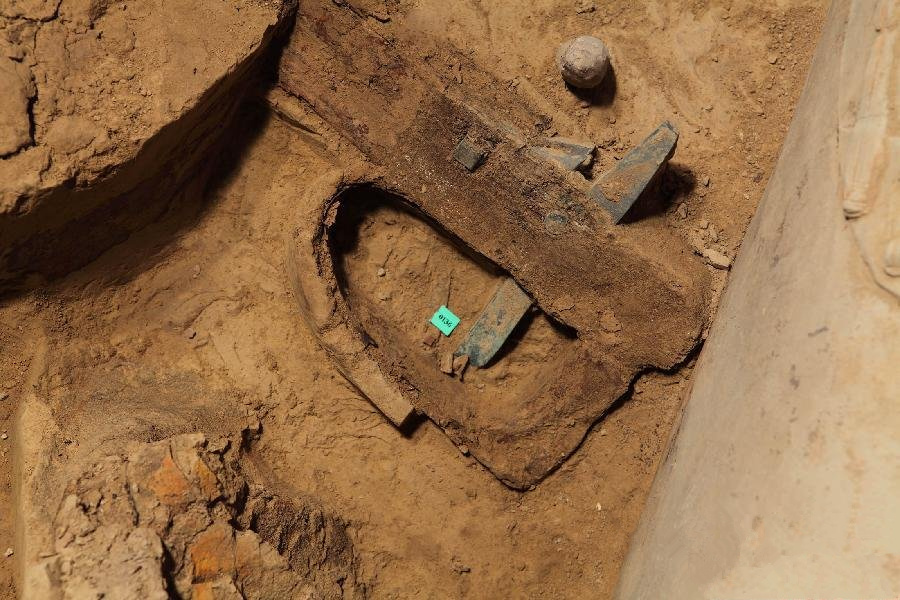
The most complete crossbow was found at the No. 1 pit of the Museum of Qin Shihuang Terracotta Warriors and Horses in Xi’an city. [Photo/Chinanews.com]
Shen Maosheng, head of the archaeological team which made the discovery said that two wooden sticks, called Qing, were found alongside the crossbow. Qing was thought to help maintain and transport the crossbows thousands of years ago, as noted in ancient records.
“When we dusted off the sticks, we found three holes equidistant from each other and concluded that they were probably used to hang up ropes that fastened the crossbows when they were not in use. It was a great way to keep the arch and string in shape and thus maintain their power in the long run. Besides, Qing was practical to help fix the crossbows during transportation,” said Shen.
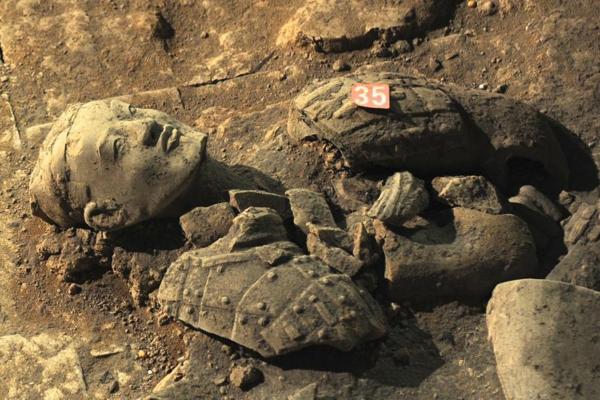
Chinese archeologists also excavated at the No. 2 pit of the Museum of Qin Shihuang Terracotta Warriors and Horses since this May. [Photo/Xinhua]
New evidence for use of fire by Peking Man
In mid-July, Chinese archeologists announced that new evidence had been found suggesting that the ancestor of modern man was able to use fire more than 600,000 years ago, after a three-year excavation in Zhoukoudian fossil site in the western suburbs of Beijing.
A fire site, sintering soil, and burned rocks and bones were uncovered at the site, said Gao Xing, research fellow with the Institute of Vertebrate Paleontology and Paleoanthropology at the Chinese Academy of Sciences. They also found fire sites encircled by rocks and lime resulting from the burning of limestone, Gao added.

Archeologists excavate in Zhoukoudian fossil site in the suburbs of Beijing.[Photo/Xinhua]
Fossils of Peking Man were discovered in the 1920s, including an entire cranium that earned Zhoukoudian fame as one of the birth places of humans. Ashes, burned bones and rocks, as well as charred seeds were also found in 1929, according to Gao, leading many archeologists to agree that Peking Man knew how to use fire.
However, there has always been skepticism that they resulted from natural fire. “The evidence this time is more convincing,” Gao said, “It has been found under the earth untouched, without weather damage.”
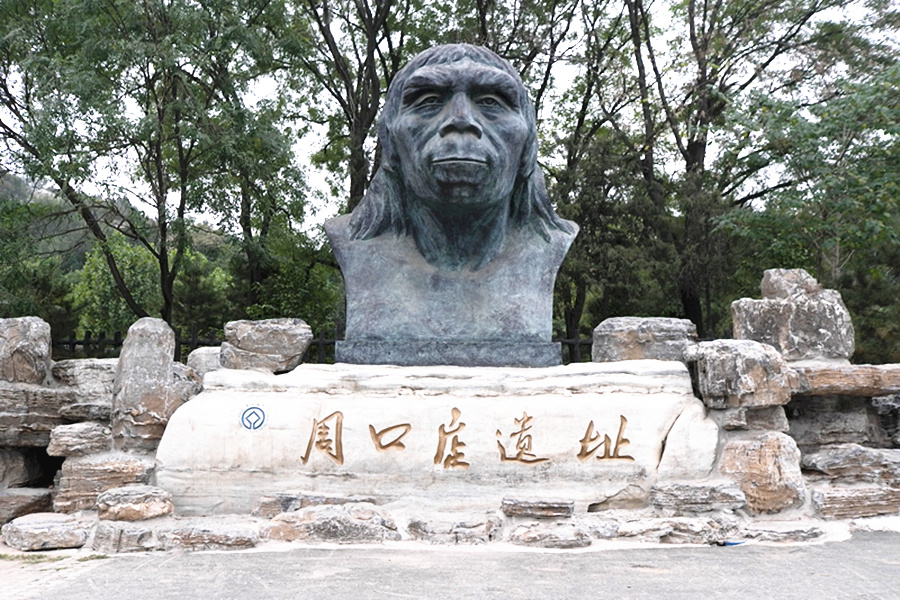
A file photo of Zhoukoudian fossil site. [File photo]
A Qing Dynasty warship from Sino-Japan War in the Yellow Sea
A Qing dynasty warship believed to have been one of four of China’s Beiyang Fleet used during the Sino-Japan War in 1894 was discovered in the Yellow Sea on November 3.
The warship, dubbed “Dandong No 1”, was found during an underwater survey commissioned by the Dandong Port Group for port construction purposes. The site is located some 10 nautical miles southwest of Dandong Port.
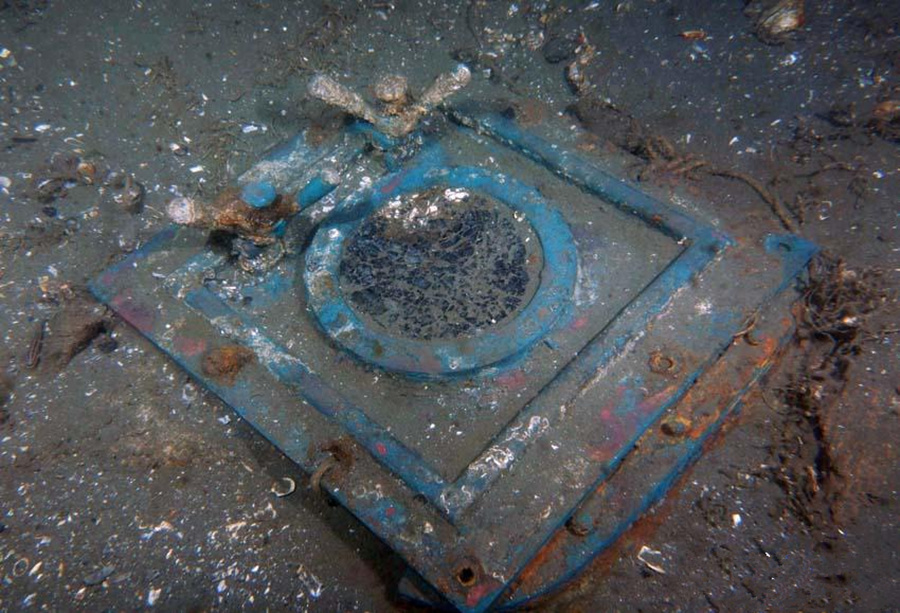
A porthole of “Dandong No 1” is found at the bottom of the sea.[Photo/People’s Daily Online]
The State Administration of Cultural Heritage launched investigation and salvage work on the 1600-tonne ship in August. So far over 100 items, including pieces of ship parts and belongings of the sailors have been successfully salvaged from the wreck.
According to archeological workers, the vessel, which was shipwrecked some 120 years ago after it was hit by the Japanese navy, suffered severe damage to the inside tanks but the 50-meter ship remained intact. It is likely one of four of the Qing Dynasty’s imperial navy warships that belonged to the Beiyang Fleet.
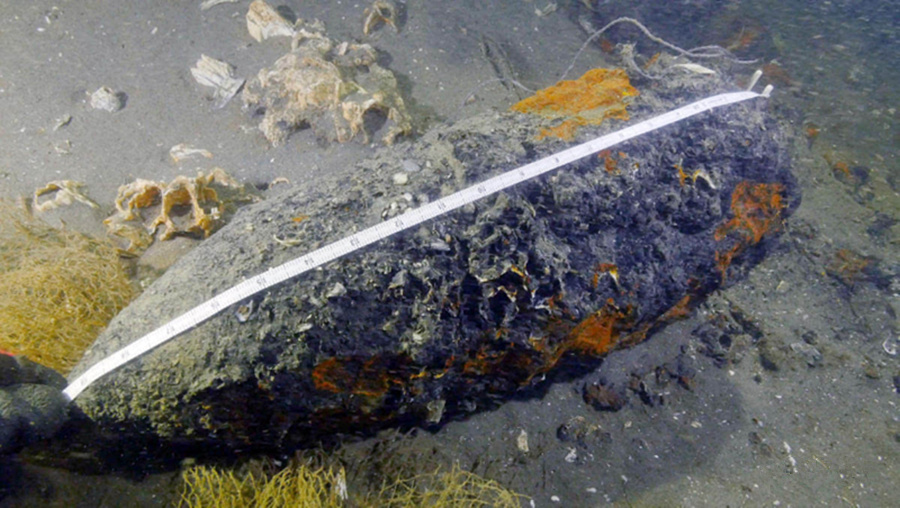
Archeologists measure the length of a cannonball of “Dandong No 1” under the Yellow Sea. [Photo/People’s Daily Online]
Ancient tombs in Xiangyang
Xiangyang Institute of Cultural Relics and Archeology found 27 brick-chambered tombs of Six Dynasties (222-589), Sui Dynasty (581-618) and Tang Dynasty (618-907) in late November in Xiangcheng District of Xiangyang, Central China’s Hubei province.
Over 70 pieces of cultural relics have been unearthed, including bronze wares, silver wares, pottery, porcelain, jade articles, as well as over 10,000 precious dated bricks and portrait bricks.
Among the tombs, an Eastern Jin (317-420) tomb and a Southern Dynasties (420-589) tomb have the highest archaeological significance. The brick coffin chamber of the Eastern Jin tomb is 2.2 meters long, 0.66 meters wide and 0.55 meters high. According to experts, on one side of a tomb brick is engraved “Taiyuan year 21, Han’s tomb”. “Taiyuan year 21” is the year 396 AD.
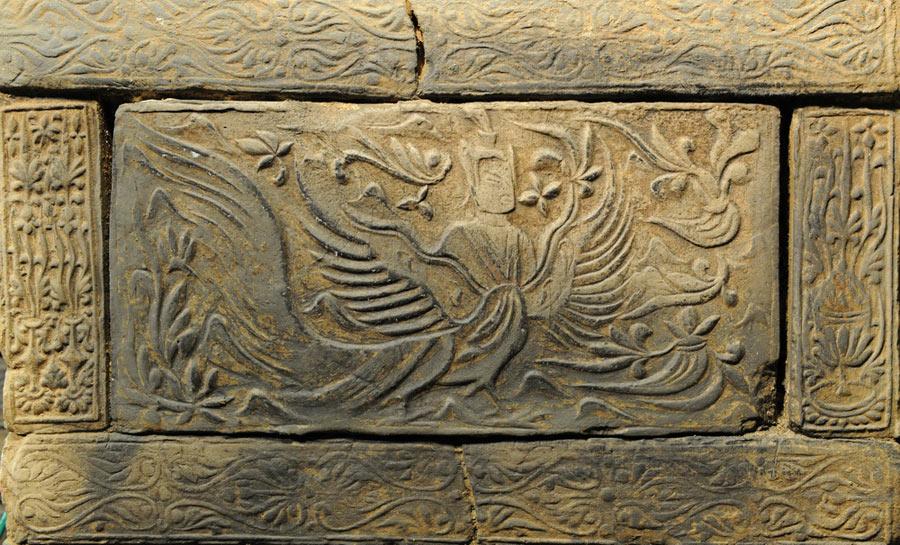
Xiangyang Institute of Cultural Relics and Archeology find out 27 ancient brick-chambered tombs in Xiangcheng District of Xiangyang, Central China’s Hubei province.[Photo/People’s Daily Online]
Bronze mirrors, porcelain, pottery and other cultural relics have been unearthed from the tomb. The brick coffin chamber of the Southern Dynasties tomb is 7 meters long, 3 meters wide and 3 meters high. The fine bricks were made of clay. Ornamental patterns were engraved on every brick, portraying animals, plants, portraits and religious stories.
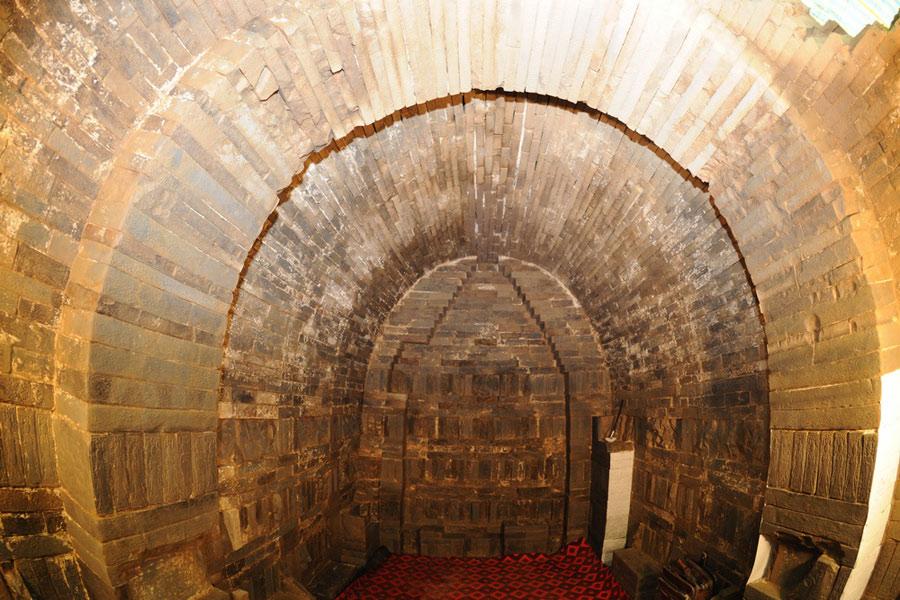
Xiangyang Institute of Cultural Relics and Archeology found 27 ancient brick-chambered tombs in Xiangcheng District of Xiangyang, Central China’s Hubei province.[Photo/People’s Daily Online]
Dazzling finds from Haihunhou cemetery
Chinese archeologists started excavating a cemetery considered as the most complete Western Han Dynasty (206BC-25AD) tomb in the capital of southeastern China’s Jiangxi province since 2011. As of now, more than 10,000 precious cultural relics were unearthed including gold items, bronze vessels, iron wares, jade articles, textiles, inscribed bamboo slips and tablets, as well as other items.
Archeologists suspected that the main tomb is that of Liu He, grandson of Emperor Wu, the greatest ruler of the Western Han Dynasty, one of the most prosperous periods in Chinese history. Liu was given the title “Haihunhou” after he was deposed as emperor after only 27 days, dethroned by the royal clan because of his lack of talent and morals. Haihun is the ancient name of a very small kingdom in the north of Jiangxi.

A jade pendant was among the latest finds at the Haihunhou cemetery.[Photo/Xinhua]
Current important archaeological findings include a bronze pot containing chestnuts which may further prove the popularity of China’ hot pot cuisine among ancient aristocrats, a lacquer screen with the earliest portrait of Confucius, a pair of goose-shaped bronze lamps that can “wallow”smoke, chimes as well as other musical instruments, Wuzhu coins, jade pendants and gold coins and hoof-shaped ingots.
The archaeological discovery of the coffin chamber in the cemetery is still ongoing. According to the archaeologists and history scholars, more important relics may be found in the following days.
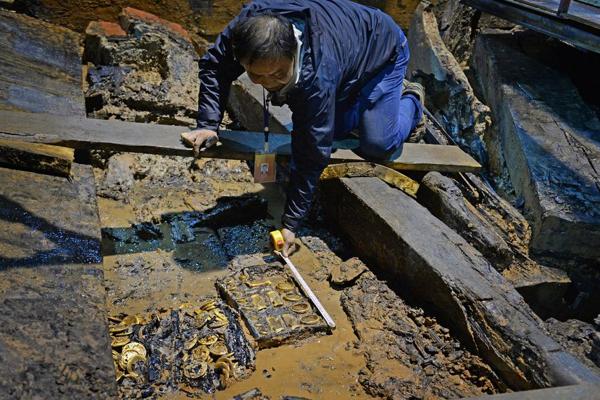
An archaeologist measures the gold items at Haihunhou cemetery. Chinese archaeologists have discovered 75 gold coins and hoof-shaped ingots in the tomb. They are the largest single batch of gold items ever found in a Han Dynasty tomb.[Photo/Xinhua]
